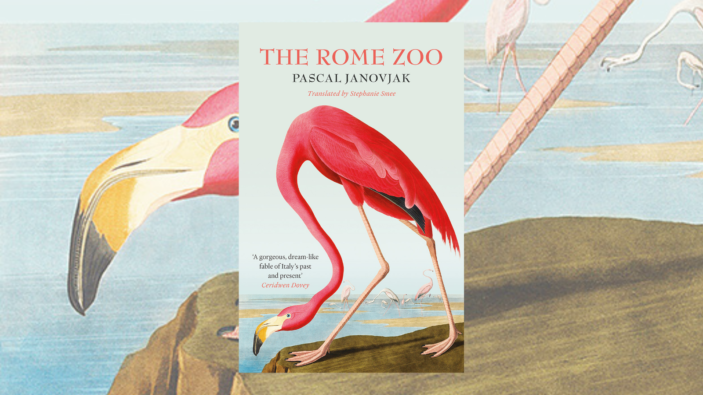
While reading The Rome Zoo by Pascal Janovjak, translated by Stephanie Smee, I was often struck by the sense that I didn’t really know what was going on; but that I was having a lovely time.
The novel is a slightly meandering account of the various iterations of the Rome Zoo (now known as the Bioparco di Roma) on the Villa Borghese. It centres around the efforts of various people to keep the zoo running despite sometimes insurmountable challenges. At the centre of it all is a (fictional) near-endangered species of anteater, a tamandin, known as Oscar – the last of his kind.
Alongside accounts of Oscar’s popularity, the audience plays witness to the blossoming relationship between mysterious zoo-going architect Chahine who seems to have his own personal lens into history, and the new head of Zoo PR, Giovanna, who is already married. Thoughts of her husband rarely intrude on the story, but his existence is established and the marriage is not an unhappy one. Giovanna’s friendship, and later relationship, with Chahine seems to be a true meeting of minds, however. The zoo, the one passion that they share, provides a place for them to meet and be together away from the rest of the world.
The zoo complex itself is witness to the history of Rome: to the rise and fall of Mussolini, to the glamour and pretence of the post-war years, to the anti-Zoo protests. Janovjak has a talent for skewering the bizarre nature of history in just a few short sentences. That his wit does not seem to lose anything in translation is a testament to the translating skills of Stephanie Smee. My favourite passage in the whole book describes the gift of a pair of lions from the MGM studios to the zoo:
“…to think that Quo and Vadis are also direct descendants of the MGM mascot, George, the lion who roars majestically at the start of each new company production! In any event, that’s what the agent had said when he came to offer the lions to the zoo- in actual fact, they used more than eighty lions to film the scene in the arena and after the filming, there were Quos and Vadises to be found in most of the zoos and circuses in Europe.” (page 92.)
It is the timeline of the novel with which I had the most trouble. Wavering between past and present day, the reading experience was sometimes disorienting. I would have appreciated some sort of marker at the beginning of each chapter to indicate to me where exactly I was in time.
My suspicion is that this is a book which will only divulge its deeper meanings upon re-reading; and I take my hat off to the author for taking me on such an entertaining ride, even if I did feel hopelessly lost at times.
Reading The Rome Zoo was something of an experience, that’s for sure and certain, and I think fans of literary fiction and magical realism will really enjoy this clever, confusing book.
![]()
![]()
![]()
![]()
![]()
THREE STARS (OUT OF FIVE)
Pascal Janovjak’s The Rome Zoo is available now from Black Inc Books. Grab yourself a copy from Booktopia HERE.
